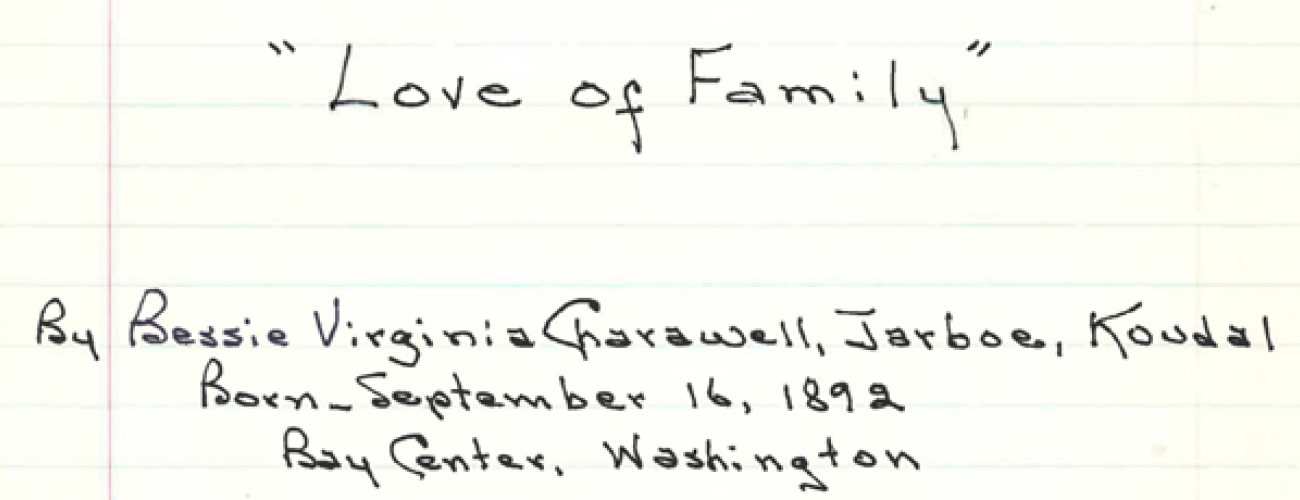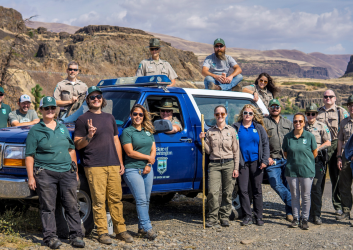Life of Bessie, born 1892
Bessie Virginia Charawell-Jarboe-Koudal grew up in the 1890s near current-day Leadbetter Point State Park and moved to Fort Worden with her husband in 1910. She handwrote her life story, and her family generously shared her writing with us. Since a woman is so much more than her last name, we call Bessie by her first name. This is part of her story.
By Kelsey Lang, Parks Interpretive Specialist, Fort Worden and
Alicia Woods, Parks Statewide Collections Curator/Collections Program Manager
Bessie was a military wife for 33 years, a mother to four girls and two boys, grandmother to four, great-grandmother to one, and wife to a second husband. She was unabashedly curious, wonderfully fearless, loved deeply and was deeply loved. This multi-part blog series will explore her life in Western Washington from the turn of the 20th century through the great wars and into the 1970s.
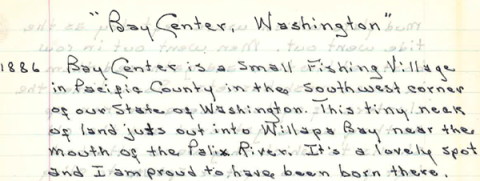
Early life at Leadbetter
Born to Lois and John Charawell in Bay Center, Washington, on September 16, 1892, Bessie Virginia Charawell grew up with three older brothers and one younger sister. As a child, she lived a typical settler lifestyle that was common at the turn of the 20th century. Her father, John had sailed to the West from Pennsylvania, while her mother, Lois, had traveled by covered wagon from Missouri. They met in California and decided to settle near family in an isolated fishing town on Willapa Bay overlooking Ledbetter Point, which is now a state park.
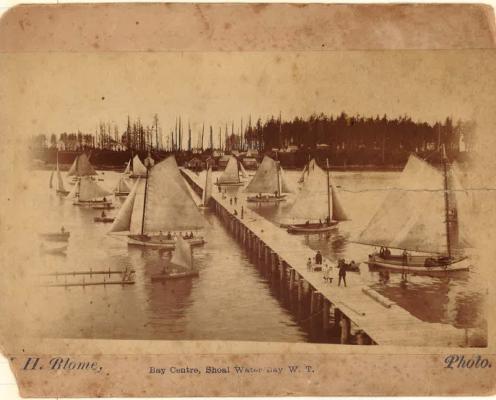
An outdoor childhood
Bessie was a self-described “tomboy.” She recalls being raised amongst two older brothers who were always daring her to climb trees and fight with the boys.
“I have the scars to prove it,” she wrote.
As far back as she could recall, Bessie loved being outside. “Some of the first things I can remember was being tied up so I wouldn’t, couldn’t follow my brothers to school, and them taking me for rides in an old wicker baby carriage. The rides were never long enough to suit me, and they resorted to all sorts of things to distract me so I wouldn’t realize we were on the way home.”
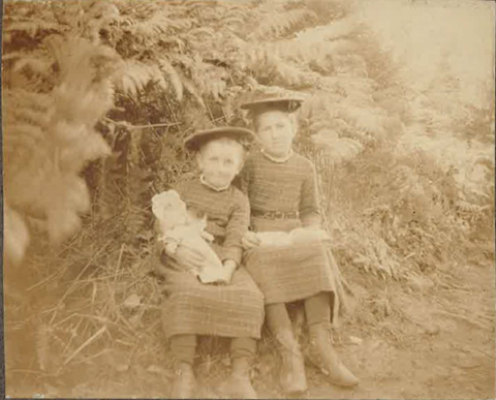
Another little story that stuck with her throughout her life was a time when she watched a snake swallow a frog whole.
She recalled, “I never thought of trying to save the frog but sat there quietly in the swing watching the whole thing. I was fascinated at the big lump the frog made in the snake’s body when he finally was all the way down.”
When weather conditions were right, her father would occasionally take her and her sister, June, out on the mudflats at low tide to pick oysters.
Bessie remembered, "We weren't very faithful pickers, but we had fun playing around these rather sandy, mudflats and eating the delicious lunches Mother had prepared for us."
Bessie received an education starting in a one-room schoolhouse and finishing at Seattle Seminary. Their mother worked as often as possible to keep the girls in Seattle.
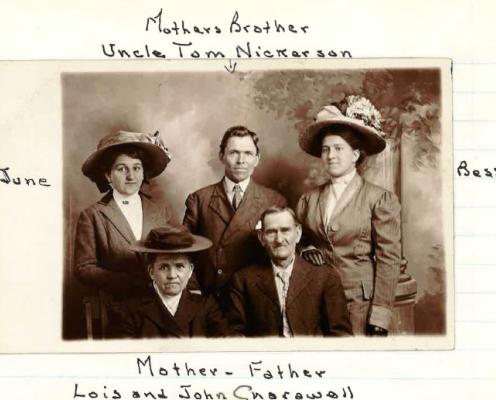
A young marriage
When Bessie was a teenager, she became good friends with a girl named Leila. One Sunday afternoon in the spring of 1908 the girls got permission to go for a walk. There had been a warning given at school for boys and girls to avoid Fort Lawton, an Infantry Post in the area.
“Goodness, gracious, our curiosity was aroused,” Bessie wrote.
So, that’s where they headed. Bessie and Leila strolled down the road, right onto the base, where it quickly became evident that they were out of place. Attempting not to make eye contact with anyone, they continued down a path that they presumed led to the beach. However, it led them to the garbage dump!
As Bessie and Leila turned around to head back, they realized they had been discovered. It was on this very day, next to the dump, that 16-year-old Bessie would meet her first husband, Sergeant William Matthew Jarboe (Matt).
One year later, on Saturday, May 22, Bessie and Matt married. The next day they spent in Seattle at the Yukon Pacific Exposition, and on Monday Matt went back to the fort and Bessie went back to 10th grade.
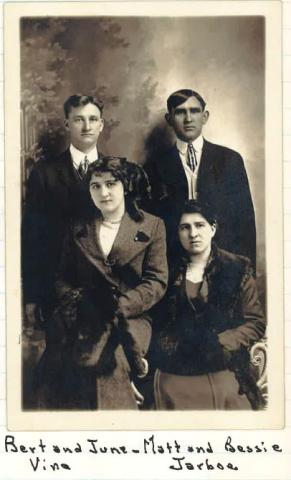
Fort Worden years
Following a brief break from military life, Matt enlisted in the126th Company of the Coast Artillery Corps at Fort Worden on Sept. 12, 1910.
Bessie recalls that time in her life:
“Those were great days. Some of the happiest of my life,” she wrote.
The Jarboes were able to purchase another soldier’s household furnishings and move into a “precious little house” on the beach just North of the Engineer’s Dock, a few feet above the high tide line. The house no longer exists, but for the Jarboe family, it was a three-room, fenced-in, ocean-view dream home. It had electric lights, but no refrigeration, a water faucet by the back door, an outdoor toilet and a small chicken house.
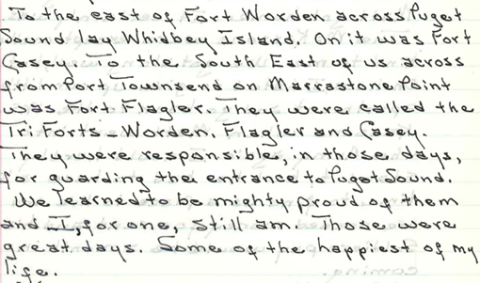
The Jarboes received their vegetables fresh and delivered to their door from the Chinese garden that supplied the whole fort with produce. At the post bakery, Bessie had a weekly standing order of two loaves of Officer’s Bread.
Friends and foes
One of the privates who worked in the bakery became a good friend of Matt and Bessie’s. One day, Bessie was struggling to cut a slice of bread. When Matt came to look, he saw that a rag had been baked into the loaf. Oh, how Matt found that funny. He knew his friend had played a trick on them. Every time they saw their friend after that, they would act as though nothing had happened. They could tell over several days that their friend was getting a little worried. He was scared the rag-loaf had accidentally been misplaced in an order that had gone to an actual officer. After coming clean about the joke to the Jarboes, they let him off the hook. A good laugh was had by all.
While Matt was busy on the fort, Bessie had plenty to keep her busy. One of the captains during this time was a widower whose daughter had come to live with him and have her baby while her husband was stationed in the Philippines. Bessie was invited to come help her hem some diapers and do some additional sewing.
“They were wonderful to me,” Bessie said. They provided lunch each day and they, “paid me much more than I was worth.”
Bessie recalled nearly all the men at the fort treating her with respect. Even so, she didn’t like it when Matt worked nights. She would sleep with “a baseball bat and very long hat pin,” by the bed.
There was, however, one soldier who would come down the hill at night, circle the house a few times, and then go back up. As you can imagine, this unnerved Bessie. One night Matt stepped out to take in the ocean and some fresh air when we saw this creep leaning on their gate and staring at their front door. Matt forcefully ran him off, and a short time later they learned that this soldier had been transferred.
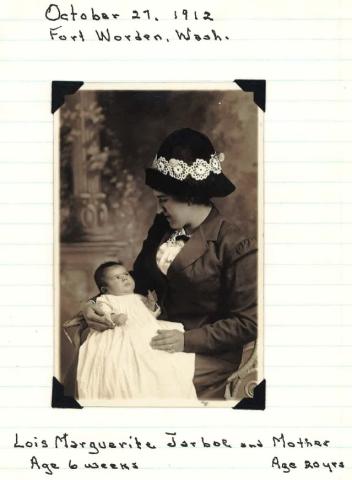
Motherhood on the fort
Bessie and Matt’s second daughter was born at Fort Worden in 1912, when Bessie was 20 years old. Their first daughter had been stillborn three years earlier, so Lois Marguerite was especially welcomed into the world. During this time, Matt took care of everything around the house, including laundry and cooking, while Bessie’s mom tended to her and Lois. Bessie sewed all of Lois’ clothes, and when she started walking Bessie learned they shared a curious nature, so much so that Lois had to be tied to the clothesline “to keep her from running away.”
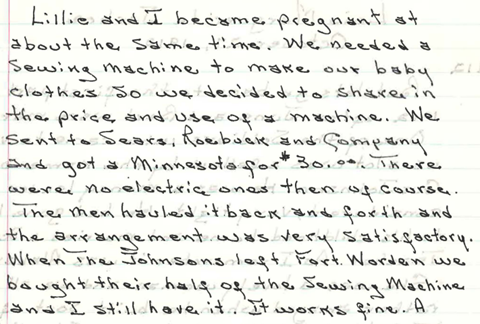
Finding community
Bessie enjoyed entertaining at the house and spending time with friends and neighbors. With Matt’s issued 22 rifle Bessie, her nephew Aubrey and their neighbors (the Jones family) would shoot tin cans floating in the water along the beach. She also considers herself lucky to have made friends with the Point Wilson Lighthouse keeper’s family, with whom she would play card games and where she was given access to the lighthouse to enjoy the view from above.
One night while entertaining guests, their little house on the beach became “ring-side seats” as a huge freighter ran aground in front of the parade ground.
“They had mistaken the lights of Fort Worden for Port Townsend,” Bessie wrote.
Everyone was quite grateful it had missed the docks in front of their house.
Perhaps one of the most unique experiences of her time living at the fort was having a beachside seat to the firing of the big guns. From their house she could watch the old steamer, Thomas, tow the targets along the waterway. Bessie recalls being on the beach the day a shot was miscalculated and hit the steamer just behind the smokestack! Believe it or not, after this incident Bessie was invited aboard the steamer to witness night practice firsthand.
“I was on that boat, the only woman, seeing the bullet leave the muzzle of that gun and traveling towards that target. They made lots of hits. No mistakes this time. The light was on the target, the boat towing it was in the dark. That was a thrill of a lifetime,” she remembered. “Only few women have ever experienced anything like it.”
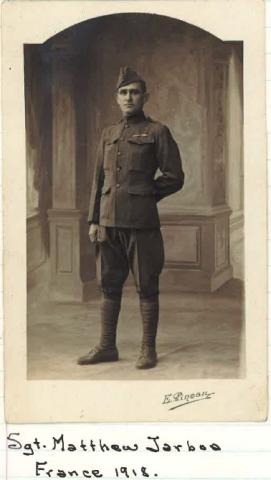
Leaving Fort Worden
In 1915 Bessie’s father passed away and Matt got permission to bury him in the military cemetery at the fort. The Jarboes then moved from their dream house on the beach into Bessie’s parents’ house.
There, in 1916, her third daughter, Joyce Mildred, was born.
In 1918 Matt was sent to France to fight in World War I. Back at home, Bessie and June folded bandages, knitted socks, scarves and anything else the Red Cross needed. Later that year, Bessie gave birth to her first son, William Matthew, Jr., and in 1919 (four months after the birth of their son) Matt came home from the war.
Stay tuned for Part 2 of Bessie's life story...
Originally published July 01, 2024

